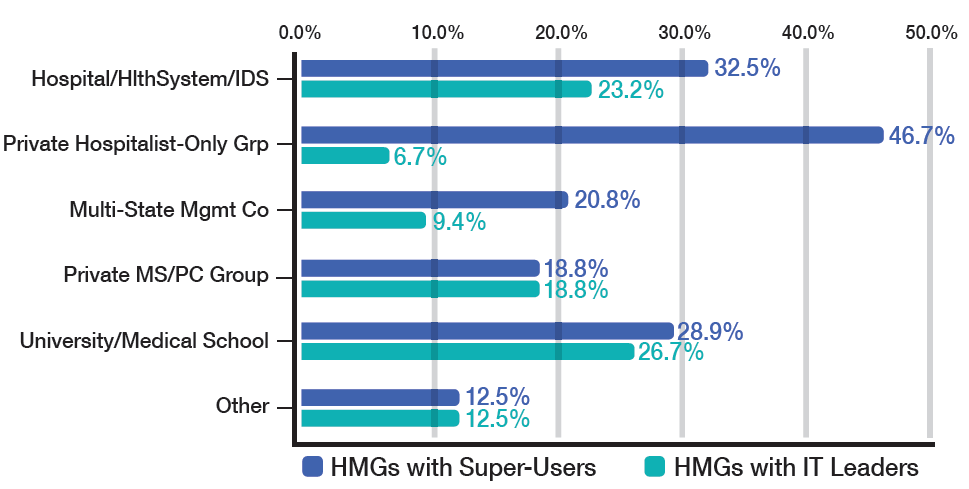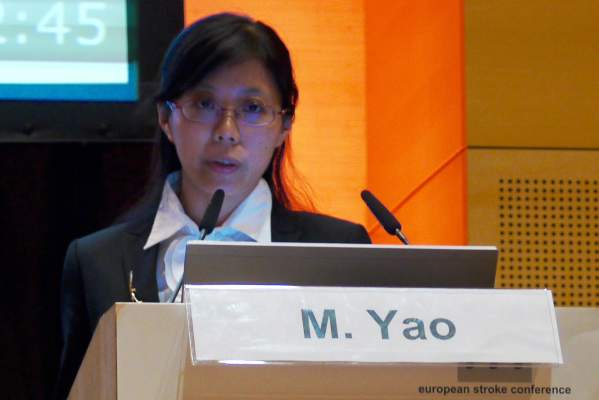User login
Society of Hospital Medicine Engagement Benchmarking Service Available
SHM’s new Engagement Benchmarking Service helps hospital medicine groups (HMGs) better understand how to engage their physicians for increased retention and performance. Now, SHM is offering the service free to SHM members as a way to build a database and familiarize HMGs with the value of the service. For details, visit www.hospitalmedicine.org/engage.
SHM’s new Engagement Benchmarking Service helps hospital medicine groups (HMGs) better understand how to engage their physicians for increased retention and performance. Now, SHM is offering the service free to SHM members as a way to build a database and familiarize HMGs with the value of the service. For details, visit www.hospitalmedicine.org/engage.
SHM’s new Engagement Benchmarking Service helps hospital medicine groups (HMGs) better understand how to engage their physicians for increased retention and performance. Now, SHM is offering the service free to SHM members as a way to build a database and familiarize HMGs with the value of the service. For details, visit www.hospitalmedicine.org/engage.
Hospital Medicine Exchange Posts Top Topics Among Hospitalists
More than 7,000 hospitalists have logged in to HMX to ask questions and share successes. These are the top topics hospitalists are discussing on HMX:
- PICC Line in IV Drug Users;
- Hospitalists Who Do Procedures;
- Census Cap Policies;
- Case Logs for Treating Patients on the Floors; and
- Medication Reconciliation.
Join the discussion—or start your own—today at www.hmxchange.org.
More than 7,000 hospitalists have logged in to HMX to ask questions and share successes. These are the top topics hospitalists are discussing on HMX:
- PICC Line in IV Drug Users;
- Hospitalists Who Do Procedures;
- Census Cap Policies;
- Case Logs for Treating Patients on the Floors; and
- Medication Reconciliation.
Join the discussion—or start your own—today at www.hmxchange.org.
More than 7,000 hospitalists have logged in to HMX to ask questions and share successes. These are the top topics hospitalists are discussing on HMX:
- PICC Line in IV Drug Users;
- Hospitalists Who Do Procedures;
- Census Cap Policies;
- Case Logs for Treating Patients on the Floors; and
- Medication Reconciliation.
Join the discussion—or start your own—today at www.hmxchange.org.
Society of Hospital Medicine Programs Help Improve Your Hospital
New Patient Experience Community and Resources
SHM’s new Patient Experience Committee has begun convening resources and people to help hospitalists address the patient experience. In addition to new resources on the SHM website, SHM has set up an HMX community specifically dedicated to the many issues related to the experience of patients in the hospital. To get involved, visit www.hospitalmedicine.org/patientexperience.
Project BOOST On-Demand Webinar Available
It’s never too late—or too early—to think about improving processes to reduce readmissions. SHM’s Project BOOST now accepts program applications throughout the year, and the recent webinar with Project BOOST program leaders is now available for free online. www.hospitalmedicine.org/boost.
Glycemic Control Implementation Guide available in June.
Glycemic control and the management of diabetic patients can be challenging for hospitalists. That’s why SHM is presenting the new Glycemic Control Implementation Guide. Recent webinars are available, too, at www.hospitalmedicine.org/qi.
Free CME on Acute Coronary Syndrome
Approximately 1.7 million patients are hospitalized for acute coronary syndrome (ACS), and 600,000 die because of an acute myocardial infarction. Now, SHM is presenting a free self-directed web-based activity designed to help hospitalists evaluate practices and strategies to affect outcomes. For details, visit www.hospitalmedicine.org/qi.
This educational initiative is supported by an educational grant from AstraZeneca.
New Patient Experience Community and Resources
SHM’s new Patient Experience Committee has begun convening resources and people to help hospitalists address the patient experience. In addition to new resources on the SHM website, SHM has set up an HMX community specifically dedicated to the many issues related to the experience of patients in the hospital. To get involved, visit www.hospitalmedicine.org/patientexperience.
Project BOOST On-Demand Webinar Available
It’s never too late—or too early—to think about improving processes to reduce readmissions. SHM’s Project BOOST now accepts program applications throughout the year, and the recent webinar with Project BOOST program leaders is now available for free online. www.hospitalmedicine.org/boost.
Glycemic Control Implementation Guide available in June.
Glycemic control and the management of diabetic patients can be challenging for hospitalists. That’s why SHM is presenting the new Glycemic Control Implementation Guide. Recent webinars are available, too, at www.hospitalmedicine.org/qi.
Free CME on Acute Coronary Syndrome
Approximately 1.7 million patients are hospitalized for acute coronary syndrome (ACS), and 600,000 die because of an acute myocardial infarction. Now, SHM is presenting a free self-directed web-based activity designed to help hospitalists evaluate practices and strategies to affect outcomes. For details, visit www.hospitalmedicine.org/qi.
This educational initiative is supported by an educational grant from AstraZeneca.
New Patient Experience Community and Resources
SHM’s new Patient Experience Committee has begun convening resources and people to help hospitalists address the patient experience. In addition to new resources on the SHM website, SHM has set up an HMX community specifically dedicated to the many issues related to the experience of patients in the hospital. To get involved, visit www.hospitalmedicine.org/patientexperience.
Project BOOST On-Demand Webinar Available
It’s never too late—or too early—to think about improving processes to reduce readmissions. SHM’s Project BOOST now accepts program applications throughout the year, and the recent webinar with Project BOOST program leaders is now available for free online. www.hospitalmedicine.org/boost.
Glycemic Control Implementation Guide available in June.
Glycemic control and the management of diabetic patients can be challenging for hospitalists. That’s why SHM is presenting the new Glycemic Control Implementation Guide. Recent webinars are available, too, at www.hospitalmedicine.org/qi.
Free CME on Acute Coronary Syndrome
Approximately 1.7 million patients are hospitalized for acute coronary syndrome (ACS), and 600,000 die because of an acute myocardial infarction. Now, SHM is presenting a free self-directed web-based activity designed to help hospitalists evaluate practices and strategies to affect outcomes. For details, visit www.hospitalmedicine.org/qi.
This educational initiative is supported by an educational grant from AstraZeneca.
Society of Hospital Medicine Events for Hospitalists in 2015
Pediatric Hospital Medicine
July 23-26, San Antonio

PHM 2015 will also feature a mobile conference app for online access to the agenda and many other features. To register, visit www.phmmeeting.org.
Academic Hospitalist Academy
Oct. 7-10, Englewood, Colo.
![]()
Adult Hospital Medicine Boot Camp for Physician Assistants and Nurse Practitioners
Oct. 14-18, Phoenix
![]()
Leadership Academy
Oct. 19-22, Austin
![]()
Pediatric Hospital Medicine
July 23-26, San Antonio

PHM 2015 will also feature a mobile conference app for online access to the agenda and many other features. To register, visit www.phmmeeting.org.
Academic Hospitalist Academy
Oct. 7-10, Englewood, Colo.
![]()
Adult Hospital Medicine Boot Camp for Physician Assistants and Nurse Practitioners
Oct. 14-18, Phoenix
![]()
Leadership Academy
Oct. 19-22, Austin
![]()
Pediatric Hospital Medicine
July 23-26, San Antonio

PHM 2015 will also feature a mobile conference app for online access to the agenda and many other features. To register, visit www.phmmeeting.org.
Academic Hospitalist Academy
Oct. 7-10, Englewood, Colo.
![]()
Adult Hospital Medicine Boot Camp for Physician Assistants and Nurse Practitioners
Oct. 14-18, Phoenix
![]()
Leadership Academy
Oct. 19-22, Austin
![]()
Society of Hospital Medicine Learning Portal Adds Programs
Free CME is available to all SHM members, and new modules are added all the time. Here’s a sampling of the most recent online modules:
- Observation or Inpatient? Challenges and Successes in Implementing the Two-Midnight Rule.
- Primer for Hospitalists on Skilled Nursing Facilities: SHM’s first educational initiative, directed at a rapidly growing segment of work for hospitalists, post-acute care (PAC).
- Organizational Knowledge and Leadership Skills 2015.
- Patient Safety Principles 2015.
- Quality Measurement and Stakeholder Interest 2015.
Free CME is available to all SHM members, and new modules are added all the time. Here’s a sampling of the most recent online modules:
- Observation or Inpatient? Challenges and Successes in Implementing the Two-Midnight Rule.
- Primer for Hospitalists on Skilled Nursing Facilities: SHM’s first educational initiative, directed at a rapidly growing segment of work for hospitalists, post-acute care (PAC).
- Organizational Knowledge and Leadership Skills 2015.
- Patient Safety Principles 2015.
- Quality Measurement and Stakeholder Interest 2015.
Free CME is available to all SHM members, and new modules are added all the time. Here’s a sampling of the most recent online modules:
- Observation or Inpatient? Challenges and Successes in Implementing the Two-Midnight Rule.
- Primer for Hospitalists on Skilled Nursing Facilities: SHM’s first educational initiative, directed at a rapidly growing segment of work for hospitalists, post-acute care (PAC).
- Organizational Knowledge and Leadership Skills 2015.
- Patient Safety Principles 2015.
- Quality Measurement and Stakeholder Interest 2015.
Veteran's Affairs Education Programs Develop Hospitalist Leaders
The Veterans Health Administration (VHA) is entrusted with three key missions: clinical care, research, and education. Although clinical care and research receive much of the publicity, the role that the VHA plays in education remains critically important to both current and future healthcare providers.
As one of the statutory requirements of the Department of Veterans Affairs (VA), the VHA runs multiple training programs, encompassing many types of healthcare providers, under the aegis of the Office of Academic Affiliations (OAA). Started after World War II, OAA was founded on the premise of joining each VA hospital with a medical school. For more than 60 years, these agreements have grown and flourished, and VHA facilities currently have affiliation agreements with 130 of the 141 accredited allopathic and 22 of the 29 accredited osteopathic medical schools in the United States. In partnership with these academic institutions, VHA trained more than 40,000 graduate medical learners (residents and fellows) and more than 21,000 medical students in 2013 alone. This makes VHA the nation’s single largest provider of medical education. Currently, more than 65% of all U.S. physicians have completed some portion of their training in a VHA setting.
A core piece of the VHA, OAA continues to innovate as it grows. For example, as the country moves toward patient-centered medical homes, VHA has developed its own version: patient aligned care teams (PACTs). Accordingly, OAA has been overseeing the development of “Academic” PACTs to better understand how to incorporate trainees into these new systems of care.
Along the same lines, there are three post-graduate training programs of particular interest to hospitalists: the Chief Resident in Quality and Patient Safety (CRQS) program, the Patient Safety Fellowship Program, and the VA National Quality Scholars Fellowship Program (NQSFP). All of these have rigorous educational components that are coordinated through the National Center for Patient Safety.
The CRQS program was developed to support additional chief residents who would be dedicated to educating housestaff and students about quality improvement and patient safety. As of July 1, 2015, there will be 58 such chief residents at VAs across the country. These positions are open to any residency that has at least eight other VA-funded resident positions in the program. Currently, there are CRQSs from internal medicine, surgery, anesthesia, and psychiatry.
The Patient Safety Fellowship is a one-year interdisciplinary program that includes nurses, pharmacists, and psychologists, as well as the physician fellows. This program is offered at six VA Medical Centers across the county and focuses on patient safety improvement science and leadership development.
Since 1999, the NQSFP has produced fellows that are leaders in QI scholarship and implementation. It is a two-year fellowship for post-graduate nurses and physicians and occurs at eight sites across the U.S.
These programs offer graduating residents who are interested in safety and quality opportunities to develop skills in research, implementation, and education. These are especially beneficial for hospitalists who may wish to pursue leadership roles in quality and safety at the program, institution, or healthcare system level.
The VA’s commitment to medical education starts at the level of medical school and continues through its post-graduate programs, many of which may well produce hospitalist leaders of the future.
Dr. Fletcher is associate program director for the internal medicine residency program at the Clement J. Zablocki VA Medical Center and the Medical College of Wisconsin in Madison. Dr. Bates is graduate medical education site director for internal medicine at Baylor College of Medicine at the Michael E. DeBakey VA Medical Center in Houston.
The Veterans Health Administration (VHA) is entrusted with three key missions: clinical care, research, and education. Although clinical care and research receive much of the publicity, the role that the VHA plays in education remains critically important to both current and future healthcare providers.
As one of the statutory requirements of the Department of Veterans Affairs (VA), the VHA runs multiple training programs, encompassing many types of healthcare providers, under the aegis of the Office of Academic Affiliations (OAA). Started after World War II, OAA was founded on the premise of joining each VA hospital with a medical school. For more than 60 years, these agreements have grown and flourished, and VHA facilities currently have affiliation agreements with 130 of the 141 accredited allopathic and 22 of the 29 accredited osteopathic medical schools in the United States. In partnership with these academic institutions, VHA trained more than 40,000 graduate medical learners (residents and fellows) and more than 21,000 medical students in 2013 alone. This makes VHA the nation’s single largest provider of medical education. Currently, more than 65% of all U.S. physicians have completed some portion of their training in a VHA setting.
A core piece of the VHA, OAA continues to innovate as it grows. For example, as the country moves toward patient-centered medical homes, VHA has developed its own version: patient aligned care teams (PACTs). Accordingly, OAA has been overseeing the development of “Academic” PACTs to better understand how to incorporate trainees into these new systems of care.
Along the same lines, there are three post-graduate training programs of particular interest to hospitalists: the Chief Resident in Quality and Patient Safety (CRQS) program, the Patient Safety Fellowship Program, and the VA National Quality Scholars Fellowship Program (NQSFP). All of these have rigorous educational components that are coordinated through the National Center for Patient Safety.
The CRQS program was developed to support additional chief residents who would be dedicated to educating housestaff and students about quality improvement and patient safety. As of July 1, 2015, there will be 58 such chief residents at VAs across the country. These positions are open to any residency that has at least eight other VA-funded resident positions in the program. Currently, there are CRQSs from internal medicine, surgery, anesthesia, and psychiatry.
The Patient Safety Fellowship is a one-year interdisciplinary program that includes nurses, pharmacists, and psychologists, as well as the physician fellows. This program is offered at six VA Medical Centers across the county and focuses on patient safety improvement science and leadership development.
Since 1999, the NQSFP has produced fellows that are leaders in QI scholarship and implementation. It is a two-year fellowship for post-graduate nurses and physicians and occurs at eight sites across the U.S.
These programs offer graduating residents who are interested in safety and quality opportunities to develop skills in research, implementation, and education. These are especially beneficial for hospitalists who may wish to pursue leadership roles in quality and safety at the program, institution, or healthcare system level.
The VA’s commitment to medical education starts at the level of medical school and continues through its post-graduate programs, many of which may well produce hospitalist leaders of the future.
Dr. Fletcher is associate program director for the internal medicine residency program at the Clement J. Zablocki VA Medical Center and the Medical College of Wisconsin in Madison. Dr. Bates is graduate medical education site director for internal medicine at Baylor College of Medicine at the Michael E. DeBakey VA Medical Center in Houston.
The Veterans Health Administration (VHA) is entrusted with three key missions: clinical care, research, and education. Although clinical care and research receive much of the publicity, the role that the VHA plays in education remains critically important to both current and future healthcare providers.
As one of the statutory requirements of the Department of Veterans Affairs (VA), the VHA runs multiple training programs, encompassing many types of healthcare providers, under the aegis of the Office of Academic Affiliations (OAA). Started after World War II, OAA was founded on the premise of joining each VA hospital with a medical school. For more than 60 years, these agreements have grown and flourished, and VHA facilities currently have affiliation agreements with 130 of the 141 accredited allopathic and 22 of the 29 accredited osteopathic medical schools in the United States. In partnership with these academic institutions, VHA trained more than 40,000 graduate medical learners (residents and fellows) and more than 21,000 medical students in 2013 alone. This makes VHA the nation’s single largest provider of medical education. Currently, more than 65% of all U.S. physicians have completed some portion of their training in a VHA setting.
A core piece of the VHA, OAA continues to innovate as it grows. For example, as the country moves toward patient-centered medical homes, VHA has developed its own version: patient aligned care teams (PACTs). Accordingly, OAA has been overseeing the development of “Academic” PACTs to better understand how to incorporate trainees into these new systems of care.
Along the same lines, there are three post-graduate training programs of particular interest to hospitalists: the Chief Resident in Quality and Patient Safety (CRQS) program, the Patient Safety Fellowship Program, and the VA National Quality Scholars Fellowship Program (NQSFP). All of these have rigorous educational components that are coordinated through the National Center for Patient Safety.
The CRQS program was developed to support additional chief residents who would be dedicated to educating housestaff and students about quality improvement and patient safety. As of July 1, 2015, there will be 58 such chief residents at VAs across the country. These positions are open to any residency that has at least eight other VA-funded resident positions in the program. Currently, there are CRQSs from internal medicine, surgery, anesthesia, and psychiatry.
The Patient Safety Fellowship is a one-year interdisciplinary program that includes nurses, pharmacists, and psychologists, as well as the physician fellows. This program is offered at six VA Medical Centers across the county and focuses on patient safety improvement science and leadership development.
Since 1999, the NQSFP has produced fellows that are leaders in QI scholarship and implementation. It is a two-year fellowship for post-graduate nurses and physicians and occurs at eight sites across the U.S.
These programs offer graduating residents who are interested in safety and quality opportunities to develop skills in research, implementation, and education. These are especially beneficial for hospitalists who may wish to pursue leadership roles in quality and safety at the program, institution, or healthcare system level.
The VA’s commitment to medical education starts at the level of medical school and continues through its post-graduate programs, many of which may well produce hospitalist leaders of the future.
Dr. Fletcher is associate program director for the internal medicine residency program at the Clement J. Zablocki VA Medical Center and the Medical College of Wisconsin in Madison. Dr. Bates is graduate medical education site director for internal medicine at Baylor College of Medicine at the Michael E. DeBakey VA Medical Center in Houston.
Movers and Shakers in Hospital Medicine, June 2015
Tammy Bugger, hospitalist practice administrator at Alton Memorial Hospital (AMH) in Alton, Ill., was awarded Manager of the Year for Illinois by BJC Medical Group. Bugger is being honored for helping to improve overall patient satisfaction scores for the AMH hospitalist group by ensuring that each patient understands the role of the hospitalist in his or her inpatient care at the hospital.
Rakhi Dimino, MD, has been promoted to one of Greenville, S.C.-based Ob Hospitalist Group’s medical directors of operations as part of its OBHG’s Clinical Leadership Team. Dr. Dimino is currently an OB hospitalist at Houston Methodist Willowbrook Hospital in Houston, Texas.
Roger Lee, MD, has been appointed to the role of chief of staff at UCLA Medical Center in Santa Monica. Dr. Lee is the current co-director of the hospitalist program at UCLA and has served as the chair of UCLA Medical Center’s Medicine Department since 2009. Dr. Lee provides inpatient care at the UCLA Santa Monica campus and at Saint John’s Health Center in Santa Monica.
Jordan Messler, MD, is the new glycemic mentor at the Diabetes Center for Excellence at Heywood Healthcare in North-Central Massachusetts, as part of its partnership with SHM’s Glycemic Control Mentored Implementation Program. Dr. Messler is the current chair of SHM’s Healthcare Quality and Patient Safety Committee. He is based in Clearwater, Fla., where he serves as the medical director of Morton Plant Hospital’s hospitalist program.
Shiraz Nisar, MD, was appointed chairperson of the department of medicine at University Hospitals (UH) Ahuja Medical Center in Cleveland, Ohio. Dr. Nisar is the current clinical site director for Community Hospitalists, a division of the Martin Healthcare Group (MHG) based in Cleveland, at UH Ahuja.
Stephen P. O’Mahony, MD, FACP, has been appointed chief medical information officer for Barnabas Health system based in West Orange, N.J. Most recently, Dr. O’Mahony served as vice president of information technology at Norwalk Hospital in Norwalk, Conn. He is credited with founding one of Connecticut’s first ever hospitalist programs at Norwalk Hospital in 1999.
O’Neil J. Pyke, MD, SFHM, is the new national director of hospital medicine for Keystone Healthcare Management, Inc., based in Memphis, Tenn. Prior to his new role, Dr. Pyke had worked as a hospitalist consultant for Keystone since 2006. Dr. Pyke previously served on SHM’s Ethics and Non-Physician Provider Committees and was a SHM Leadership Academy faculty facilitator.
Jeff Sperring, MD, has been named the new CEO of Seattle Children’s Hospital in Seattle, Wash. Most recently, Dr. Sperring was the CEO of Riley Hospital for Children at Indiana University Health in Indianapolis. Before joining the C-suite, Dr. Sperring served as director of pediatric hospital medicine, chief of staff, and associate chief of staff at Riley Hospital.
Robin Thomas, DO, is the new chairperson of the department of medicine at UH Regional Hospitals, Richmond Campus. Dr. Thomas is a hospitalist for Community Hospitalists, a division of Martin Healthcare Group (MHG) based in Cleveland, Ohio. Dr. Thomas is the current residency director for UH Regional Hospitals.
Jane van Dis, MD, FACOG, was recently promoted to one of the positions of medical directors of operations for Ob Hospitalist Group based in Greenville, S.C. Dr. van Dis is an OB hospitalist at Huntington Memorial Hospital in Pasadena, Calif. Before launching her clinical career six years ago, Dr. van Dis taught at the University of Minnesota Department of OB/GYN as an assistant professor and served as director of the Medical Student OB/GYN Clerkship at the University of Minnesota.
Business Moves
Bates County Memorial Hospital (BCMH) in Butler, Mo., has partnered with Saint Luke’s Health System and Saint Luke’s Physician Specialists to offer hospital medicine services at the facility. The new hospitalist program will staff four hospitalists seven days a week in the hospital from 7 a.m. to 5 p.m. and via telemedicine at night. Saint Luke’s Health System is a regional hospital system that consists of 10 acute care facilities and dozens of outpatient, specialty, and laboratory practices throughout the greater Kansas City area.
Blue Ridge Regional Hospital (BRRH) in Spruce Pine, N.C., recently launched its first hospitalist program. BRRH is a 46-bed, nonprofit, acute care facility serving lower Avery, upper McDowell, Mitchell, and Yancey counties in North Carolina.

IPC Healthcare, Inc. (formerly IPC The Hospitalist Company), based in North Hollywood, Calif., recently acquired Capital Internal Medicine, LLC, based in Silver Spring, Md.; Geriatrics Associates, PC, in Albuquerque, N.M., and GTA Health Solutions in Morristown, Tenn. Capital Internal Medicine is a physician staffing company serving the greater Washington, D.C., metro area. Geriatrics Associates is a long-term and hospice care provider serving greater Albuquerque. GTA Health Solutions is a post-acute behavioral health practice. IPC provides hospitalist and post-acute staffing services in 27 states across the country.
Moses Taylor Hospital, a 217-bed acute care center in Scranton, Penn., recently opened a brand new pediatric wing that will be staffed by a team of pediatric hospitalists from Penn State Hershey Children’s Hospital. The new Pediatric Center of Excellence will provide 18 beds for pediatric care 24 hours a day. Moses Taylor Hospital is part of Commonwealth Health, a regional healthcare network in Northeastern Pennsylvania consisting of six hospitals and dozens of post-acute and laboratory centers throughout the region.

Sound Physicians is now providing hospitalist services to Dignity Health-St. Rose Dominican hospital in Henderson, Nev. St. Rose Dominican is a nonprofit, religiously sponsored hospital part of the Dignity Health network, which operates hospitals, clinics, and care centers in 21 states across the country. Sound Physicians is one of the largest hospitalist providers in the United States, serving hospitals in 35 states across the United States.
Southland MD, a regional hospitalist service provider based in Thomasville, Ga., is now providing hospital medicine at Memorial Hospital and Manor in Bainbridge, Ga. Memorial Hospital and Manor is an 80-bed acute care hospital with an adjacent 107-bed nursing home next door. Southland MD is a regional hospitalist, emergency medicine, and outpatient care provider serving patients throughout South Georgia and North Florida.
–Michael O’Neal
Tammy Bugger, hospitalist practice administrator at Alton Memorial Hospital (AMH) in Alton, Ill., was awarded Manager of the Year for Illinois by BJC Medical Group. Bugger is being honored for helping to improve overall patient satisfaction scores for the AMH hospitalist group by ensuring that each patient understands the role of the hospitalist in his or her inpatient care at the hospital.
Rakhi Dimino, MD, has been promoted to one of Greenville, S.C.-based Ob Hospitalist Group’s medical directors of operations as part of its OBHG’s Clinical Leadership Team. Dr. Dimino is currently an OB hospitalist at Houston Methodist Willowbrook Hospital in Houston, Texas.
Roger Lee, MD, has been appointed to the role of chief of staff at UCLA Medical Center in Santa Monica. Dr. Lee is the current co-director of the hospitalist program at UCLA and has served as the chair of UCLA Medical Center’s Medicine Department since 2009. Dr. Lee provides inpatient care at the UCLA Santa Monica campus and at Saint John’s Health Center in Santa Monica.
Jordan Messler, MD, is the new glycemic mentor at the Diabetes Center for Excellence at Heywood Healthcare in North-Central Massachusetts, as part of its partnership with SHM’s Glycemic Control Mentored Implementation Program. Dr. Messler is the current chair of SHM’s Healthcare Quality and Patient Safety Committee. He is based in Clearwater, Fla., where he serves as the medical director of Morton Plant Hospital’s hospitalist program.
Shiraz Nisar, MD, was appointed chairperson of the department of medicine at University Hospitals (UH) Ahuja Medical Center in Cleveland, Ohio. Dr. Nisar is the current clinical site director for Community Hospitalists, a division of the Martin Healthcare Group (MHG) based in Cleveland, at UH Ahuja.
Stephen P. O’Mahony, MD, FACP, has been appointed chief medical information officer for Barnabas Health system based in West Orange, N.J. Most recently, Dr. O’Mahony served as vice president of information technology at Norwalk Hospital in Norwalk, Conn. He is credited with founding one of Connecticut’s first ever hospitalist programs at Norwalk Hospital in 1999.
O’Neil J. Pyke, MD, SFHM, is the new national director of hospital medicine for Keystone Healthcare Management, Inc., based in Memphis, Tenn. Prior to his new role, Dr. Pyke had worked as a hospitalist consultant for Keystone since 2006. Dr. Pyke previously served on SHM’s Ethics and Non-Physician Provider Committees and was a SHM Leadership Academy faculty facilitator.
Jeff Sperring, MD, has been named the new CEO of Seattle Children’s Hospital in Seattle, Wash. Most recently, Dr. Sperring was the CEO of Riley Hospital for Children at Indiana University Health in Indianapolis. Before joining the C-suite, Dr. Sperring served as director of pediatric hospital medicine, chief of staff, and associate chief of staff at Riley Hospital.
Robin Thomas, DO, is the new chairperson of the department of medicine at UH Regional Hospitals, Richmond Campus. Dr. Thomas is a hospitalist for Community Hospitalists, a division of Martin Healthcare Group (MHG) based in Cleveland, Ohio. Dr. Thomas is the current residency director for UH Regional Hospitals.
Jane van Dis, MD, FACOG, was recently promoted to one of the positions of medical directors of operations for Ob Hospitalist Group based in Greenville, S.C. Dr. van Dis is an OB hospitalist at Huntington Memorial Hospital in Pasadena, Calif. Before launching her clinical career six years ago, Dr. van Dis taught at the University of Minnesota Department of OB/GYN as an assistant professor and served as director of the Medical Student OB/GYN Clerkship at the University of Minnesota.
Business Moves
Bates County Memorial Hospital (BCMH) in Butler, Mo., has partnered with Saint Luke’s Health System and Saint Luke’s Physician Specialists to offer hospital medicine services at the facility. The new hospitalist program will staff four hospitalists seven days a week in the hospital from 7 a.m. to 5 p.m. and via telemedicine at night. Saint Luke’s Health System is a regional hospital system that consists of 10 acute care facilities and dozens of outpatient, specialty, and laboratory practices throughout the greater Kansas City area.
Blue Ridge Regional Hospital (BRRH) in Spruce Pine, N.C., recently launched its first hospitalist program. BRRH is a 46-bed, nonprofit, acute care facility serving lower Avery, upper McDowell, Mitchell, and Yancey counties in North Carolina.

IPC Healthcare, Inc. (formerly IPC The Hospitalist Company), based in North Hollywood, Calif., recently acquired Capital Internal Medicine, LLC, based in Silver Spring, Md.; Geriatrics Associates, PC, in Albuquerque, N.M., and GTA Health Solutions in Morristown, Tenn. Capital Internal Medicine is a physician staffing company serving the greater Washington, D.C., metro area. Geriatrics Associates is a long-term and hospice care provider serving greater Albuquerque. GTA Health Solutions is a post-acute behavioral health practice. IPC provides hospitalist and post-acute staffing services in 27 states across the country.
Moses Taylor Hospital, a 217-bed acute care center in Scranton, Penn., recently opened a brand new pediatric wing that will be staffed by a team of pediatric hospitalists from Penn State Hershey Children’s Hospital. The new Pediatric Center of Excellence will provide 18 beds for pediatric care 24 hours a day. Moses Taylor Hospital is part of Commonwealth Health, a regional healthcare network in Northeastern Pennsylvania consisting of six hospitals and dozens of post-acute and laboratory centers throughout the region.

Sound Physicians is now providing hospitalist services to Dignity Health-St. Rose Dominican hospital in Henderson, Nev. St. Rose Dominican is a nonprofit, religiously sponsored hospital part of the Dignity Health network, which operates hospitals, clinics, and care centers in 21 states across the country. Sound Physicians is one of the largest hospitalist providers in the United States, serving hospitals in 35 states across the United States.
Southland MD, a regional hospitalist service provider based in Thomasville, Ga., is now providing hospital medicine at Memorial Hospital and Manor in Bainbridge, Ga. Memorial Hospital and Manor is an 80-bed acute care hospital with an adjacent 107-bed nursing home next door. Southland MD is a regional hospitalist, emergency medicine, and outpatient care provider serving patients throughout South Georgia and North Florida.
–Michael O’Neal
Tammy Bugger, hospitalist practice administrator at Alton Memorial Hospital (AMH) in Alton, Ill., was awarded Manager of the Year for Illinois by BJC Medical Group. Bugger is being honored for helping to improve overall patient satisfaction scores for the AMH hospitalist group by ensuring that each patient understands the role of the hospitalist in his or her inpatient care at the hospital.
Rakhi Dimino, MD, has been promoted to one of Greenville, S.C.-based Ob Hospitalist Group’s medical directors of operations as part of its OBHG’s Clinical Leadership Team. Dr. Dimino is currently an OB hospitalist at Houston Methodist Willowbrook Hospital in Houston, Texas.
Roger Lee, MD, has been appointed to the role of chief of staff at UCLA Medical Center in Santa Monica. Dr. Lee is the current co-director of the hospitalist program at UCLA and has served as the chair of UCLA Medical Center’s Medicine Department since 2009. Dr. Lee provides inpatient care at the UCLA Santa Monica campus and at Saint John’s Health Center in Santa Monica.
Jordan Messler, MD, is the new glycemic mentor at the Diabetes Center for Excellence at Heywood Healthcare in North-Central Massachusetts, as part of its partnership with SHM’s Glycemic Control Mentored Implementation Program. Dr. Messler is the current chair of SHM’s Healthcare Quality and Patient Safety Committee. He is based in Clearwater, Fla., where he serves as the medical director of Morton Plant Hospital’s hospitalist program.
Shiraz Nisar, MD, was appointed chairperson of the department of medicine at University Hospitals (UH) Ahuja Medical Center in Cleveland, Ohio. Dr. Nisar is the current clinical site director for Community Hospitalists, a division of the Martin Healthcare Group (MHG) based in Cleveland, at UH Ahuja.
Stephen P. O’Mahony, MD, FACP, has been appointed chief medical information officer for Barnabas Health system based in West Orange, N.J. Most recently, Dr. O’Mahony served as vice president of information technology at Norwalk Hospital in Norwalk, Conn. He is credited with founding one of Connecticut’s first ever hospitalist programs at Norwalk Hospital in 1999.
O’Neil J. Pyke, MD, SFHM, is the new national director of hospital medicine for Keystone Healthcare Management, Inc., based in Memphis, Tenn. Prior to his new role, Dr. Pyke had worked as a hospitalist consultant for Keystone since 2006. Dr. Pyke previously served on SHM’s Ethics and Non-Physician Provider Committees and was a SHM Leadership Academy faculty facilitator.
Jeff Sperring, MD, has been named the new CEO of Seattle Children’s Hospital in Seattle, Wash. Most recently, Dr. Sperring was the CEO of Riley Hospital for Children at Indiana University Health in Indianapolis. Before joining the C-suite, Dr. Sperring served as director of pediatric hospital medicine, chief of staff, and associate chief of staff at Riley Hospital.
Robin Thomas, DO, is the new chairperson of the department of medicine at UH Regional Hospitals, Richmond Campus. Dr. Thomas is a hospitalist for Community Hospitalists, a division of Martin Healthcare Group (MHG) based in Cleveland, Ohio. Dr. Thomas is the current residency director for UH Regional Hospitals.
Jane van Dis, MD, FACOG, was recently promoted to one of the positions of medical directors of operations for Ob Hospitalist Group based in Greenville, S.C. Dr. van Dis is an OB hospitalist at Huntington Memorial Hospital in Pasadena, Calif. Before launching her clinical career six years ago, Dr. van Dis taught at the University of Minnesota Department of OB/GYN as an assistant professor and served as director of the Medical Student OB/GYN Clerkship at the University of Minnesota.
Business Moves
Bates County Memorial Hospital (BCMH) in Butler, Mo., has partnered with Saint Luke’s Health System and Saint Luke’s Physician Specialists to offer hospital medicine services at the facility. The new hospitalist program will staff four hospitalists seven days a week in the hospital from 7 a.m. to 5 p.m. and via telemedicine at night. Saint Luke’s Health System is a regional hospital system that consists of 10 acute care facilities and dozens of outpatient, specialty, and laboratory practices throughout the greater Kansas City area.
Blue Ridge Regional Hospital (BRRH) in Spruce Pine, N.C., recently launched its first hospitalist program. BRRH is a 46-bed, nonprofit, acute care facility serving lower Avery, upper McDowell, Mitchell, and Yancey counties in North Carolina.

IPC Healthcare, Inc. (formerly IPC The Hospitalist Company), based in North Hollywood, Calif., recently acquired Capital Internal Medicine, LLC, based in Silver Spring, Md.; Geriatrics Associates, PC, in Albuquerque, N.M., and GTA Health Solutions in Morristown, Tenn. Capital Internal Medicine is a physician staffing company serving the greater Washington, D.C., metro area. Geriatrics Associates is a long-term and hospice care provider serving greater Albuquerque. GTA Health Solutions is a post-acute behavioral health practice. IPC provides hospitalist and post-acute staffing services in 27 states across the country.
Moses Taylor Hospital, a 217-bed acute care center in Scranton, Penn., recently opened a brand new pediatric wing that will be staffed by a team of pediatric hospitalists from Penn State Hershey Children’s Hospital. The new Pediatric Center of Excellence will provide 18 beds for pediatric care 24 hours a day. Moses Taylor Hospital is part of Commonwealth Health, a regional healthcare network in Northeastern Pennsylvania consisting of six hospitals and dozens of post-acute and laboratory centers throughout the region.

Sound Physicians is now providing hospitalist services to Dignity Health-St. Rose Dominican hospital in Henderson, Nev. St. Rose Dominican is a nonprofit, religiously sponsored hospital part of the Dignity Health network, which operates hospitals, clinics, and care centers in 21 states across the country. Sound Physicians is one of the largest hospitalist providers in the United States, serving hospitals in 35 states across the United States.
Southland MD, a regional hospitalist service provider based in Thomasville, Ga., is now providing hospital medicine at Memorial Hospital and Manor in Bainbridge, Ga. Memorial Hospital and Manor is an 80-bed acute care hospital with an adjacent 107-bed nursing home next door. Southland MD is a regional hospitalist, emergency medicine, and outpatient care provider serving patients throughout South Georgia and North Florida.
–Michael O’Neal
David Henry's JCSO podcast, May 2015
In his monthly podcast for The Journal of Community and Supportive Oncology, Dr David Henry looks at Original Reports on the treatment of metastatic breast cancer with nab-paclitaxel in the community practice setting; health professionals’ attitudes toward detecting and managing cancer-related anorexia-cachexia syndrome; the factors associated with symptom-related emergency department visits and hospital admissions during ambulatory cancer treatment; and differences in treatment between urban and rural women with hormone receptor-positive early-stage breast cancer. He also discusses a case report on a patient with severe chemotherapy-induced peripheral neuropathy who experienced a significant response to lacosamide, and Community Translations item using blinatumomab for hard-to-treat acute lymphoblastic leukemia.
BCP-ALL, CD19, CD3, dosage-schedule, nab-paclitaxel, metastatic breast cancer, MBC, human epidermal growth factor receptor 2, HER2–negative, anorexia-cachexia syndrome, CACS, non-small-cell lung cancer, NSCLC, symptom distress, quality of life, QoL, side effects, emergency department, ED, hospital admissions, HAs, emergency department visits, EDVs, symptom-related EDVs, sx-EDV/HAs, urban, rural, hormone receptor-positive, breast cancer, lacosamide, anticonvulsant, chemotherapy-induced peripheral neuropathy, CIPN, urothelial carcinoma,
MVAC, methotrexate, vincristine, adriamycin, cisplatin
In his monthly podcast for The Journal of Community and Supportive Oncology, Dr David Henry looks at Original Reports on the treatment of metastatic breast cancer with nab-paclitaxel in the community practice setting; health professionals’ attitudes toward detecting and managing cancer-related anorexia-cachexia syndrome; the factors associated with symptom-related emergency department visits and hospital admissions during ambulatory cancer treatment; and differences in treatment between urban and rural women with hormone receptor-positive early-stage breast cancer. He also discusses a case report on a patient with severe chemotherapy-induced peripheral neuropathy who experienced a significant response to lacosamide, and Community Translations item using blinatumomab for hard-to-treat acute lymphoblastic leukemia.
In his monthly podcast for The Journal of Community and Supportive Oncology, Dr David Henry looks at Original Reports on the treatment of metastatic breast cancer with nab-paclitaxel in the community practice setting; health professionals’ attitudes toward detecting and managing cancer-related anorexia-cachexia syndrome; the factors associated with symptom-related emergency department visits and hospital admissions during ambulatory cancer treatment; and differences in treatment between urban and rural women with hormone receptor-positive early-stage breast cancer. He also discusses a case report on a patient with severe chemotherapy-induced peripheral neuropathy who experienced a significant response to lacosamide, and Community Translations item using blinatumomab for hard-to-treat acute lymphoblastic leukemia.
BCP-ALL, CD19, CD3, dosage-schedule, nab-paclitaxel, metastatic breast cancer, MBC, human epidermal growth factor receptor 2, HER2–negative, anorexia-cachexia syndrome, CACS, non-small-cell lung cancer, NSCLC, symptom distress, quality of life, QoL, side effects, emergency department, ED, hospital admissions, HAs, emergency department visits, EDVs, symptom-related EDVs, sx-EDV/HAs, urban, rural, hormone receptor-positive, breast cancer, lacosamide, anticonvulsant, chemotherapy-induced peripheral neuropathy, CIPN, urothelial carcinoma,
MVAC, methotrexate, vincristine, adriamycin, cisplatin
BCP-ALL, CD19, CD3, dosage-schedule, nab-paclitaxel, metastatic breast cancer, MBC, human epidermal growth factor receptor 2, HER2–negative, anorexia-cachexia syndrome, CACS, non-small-cell lung cancer, NSCLC, symptom distress, quality of life, QoL, side effects, emergency department, ED, hospital admissions, HAs, emergency department visits, EDVs, symptom-related EDVs, sx-EDV/HAs, urban, rural, hormone receptor-positive, breast cancer, lacosamide, anticonvulsant, chemotherapy-induced peripheral neuropathy, CIPN, urothelial carcinoma,
MVAC, methotrexate, vincristine, adriamycin, cisplatin
Hyperglycemia may predict prognosis after ischemic stroke
VIENNA – Patients who have had an ischemic stroke and have high blood sugar levels without being diabetic may be more likely to experience functional impairments than those already diagnosed with diabetes, according to results from a large secondary stroke prevention trial performed in China.
In the trial, conducted at 47 hospitals, high levels of fasting blood glucose (FBG) were associated with worse disability at 6 months in the study, but the association only held in patients who did not have a diagnosis of diabetes at the time of their stroke. The odds ratios for poor functional outcome assessed using the modified Rankin scale (mRS) as a score of greater than 2 versus up to 2 were 1.09 (P = .031) in nondiabetics and 0.98 (P = 0.65) in those previously known to have diabetes.
“We think that a high FBG level after stroke might be better for predicting prognosis in patients without prediagnosed diabetes than in those with diabetes and confirms the importance of glycemic control during the acute phase of ischemic stroke,” said study researcher Dr. Ming Yao of Peking Union Medical College Hospital at the annual European Stroke Conference.Dr. Yao noted that hyperglycemia after an acute stroke had already been linked to poorer clinical outcomes, with reports of larger infarct volumes, an increased risk for secondary hemorrhagic transformation, and lower recanalization rates after thrombolysis. However, it was not clear how functional outcomes were affected or if there was much of difference based on whether or not a patient had diabetes. Data from the Standard Medical Management in Secondary Prevention of Ischemic Stroke in China (SMART) study were therefore used to see what effect high FBG had on functional outcomes in diabetic versus nondiabetic subjects. SMART was a multicenter, cluster-randomized, controlled trial designed to assess the effectiveness of a guideline-based structured care program versus usual care for the secondary prevention of ischemic stroke (Stroke. 2014;45:515-9) and offered a large population of patients for the subgroup analysis. Of the 3,821 patients enrolled in the study, 2,862 had FBG data available and had complete follow-up data at 6 months.
Potential factors related to functional outcome 6 months after a stroke were first identified in the whole cohort using a binary logistic regression model, which categorized outcome as favorable (mRS ≤2) or poor (mRS >2). Univariate and multivariate analyses were then performed to narrow down the variables that might be the most influential.
For the whole cohort, older age (OR = 1.04, P < .001), hypertension (OR = 1.45, P = .028), baseline National Institutes of Health Stroke Scale (NIHSS) score (OR = 1.28, P < .001), and FBG (OR = 1.07, P = .004) were indicative of a poor functional outcome.
Looking at patients with and without diabetes, older age remained predictive of a poorer functional outcome, with respective odds ratios of 1.04 (P = .011) and 1.04 (P < .001). Baseline NIHSS score was also predictive in both patients with diabetes (OR = 1.33, P < .001) and those without (OR = 1.27, P < .001).
“Our present results demonstrate that a higher FBG following stroke is strongly and independently associated with a poor functional outcome,” Dr. Yao observed, “but this association was found only in patients without prediagnosed diabetes.”
The study was study was sponsored by Peking Union Medical College Hospital. Dr. Yao had no conflicts of interest.
VIENNA – Patients who have had an ischemic stroke and have high blood sugar levels without being diabetic may be more likely to experience functional impairments than those already diagnosed with diabetes, according to results from a large secondary stroke prevention trial performed in China.
In the trial, conducted at 47 hospitals, high levels of fasting blood glucose (FBG) were associated with worse disability at 6 months in the study, but the association only held in patients who did not have a diagnosis of diabetes at the time of their stroke. The odds ratios for poor functional outcome assessed using the modified Rankin scale (mRS) as a score of greater than 2 versus up to 2 were 1.09 (P = .031) in nondiabetics and 0.98 (P = 0.65) in those previously known to have diabetes.
“We think that a high FBG level after stroke might be better for predicting prognosis in patients without prediagnosed diabetes than in those with diabetes and confirms the importance of glycemic control during the acute phase of ischemic stroke,” said study researcher Dr. Ming Yao of Peking Union Medical College Hospital at the annual European Stroke Conference.Dr. Yao noted that hyperglycemia after an acute stroke had already been linked to poorer clinical outcomes, with reports of larger infarct volumes, an increased risk for secondary hemorrhagic transformation, and lower recanalization rates after thrombolysis. However, it was not clear how functional outcomes were affected or if there was much of difference based on whether or not a patient had diabetes. Data from the Standard Medical Management in Secondary Prevention of Ischemic Stroke in China (SMART) study were therefore used to see what effect high FBG had on functional outcomes in diabetic versus nondiabetic subjects. SMART was a multicenter, cluster-randomized, controlled trial designed to assess the effectiveness of a guideline-based structured care program versus usual care for the secondary prevention of ischemic stroke (Stroke. 2014;45:515-9) and offered a large population of patients for the subgroup analysis. Of the 3,821 patients enrolled in the study, 2,862 had FBG data available and had complete follow-up data at 6 months.
Potential factors related to functional outcome 6 months after a stroke were first identified in the whole cohort using a binary logistic regression model, which categorized outcome as favorable (mRS ≤2) or poor (mRS >2). Univariate and multivariate analyses were then performed to narrow down the variables that might be the most influential.
For the whole cohort, older age (OR = 1.04, P < .001), hypertension (OR = 1.45, P = .028), baseline National Institutes of Health Stroke Scale (NIHSS) score (OR = 1.28, P < .001), and FBG (OR = 1.07, P = .004) were indicative of a poor functional outcome.
Looking at patients with and without diabetes, older age remained predictive of a poorer functional outcome, with respective odds ratios of 1.04 (P = .011) and 1.04 (P < .001). Baseline NIHSS score was also predictive in both patients with diabetes (OR = 1.33, P < .001) and those without (OR = 1.27, P < .001).
“Our present results demonstrate that a higher FBG following stroke is strongly and independently associated with a poor functional outcome,” Dr. Yao observed, “but this association was found only in patients without prediagnosed diabetes.”
The study was study was sponsored by Peking Union Medical College Hospital. Dr. Yao had no conflicts of interest.
VIENNA – Patients who have had an ischemic stroke and have high blood sugar levels without being diabetic may be more likely to experience functional impairments than those already diagnosed with diabetes, according to results from a large secondary stroke prevention trial performed in China.
In the trial, conducted at 47 hospitals, high levels of fasting blood glucose (FBG) were associated with worse disability at 6 months in the study, but the association only held in patients who did not have a diagnosis of diabetes at the time of their stroke. The odds ratios for poor functional outcome assessed using the modified Rankin scale (mRS) as a score of greater than 2 versus up to 2 were 1.09 (P = .031) in nondiabetics and 0.98 (P = 0.65) in those previously known to have diabetes.
“We think that a high FBG level after stroke might be better for predicting prognosis in patients without prediagnosed diabetes than in those with diabetes and confirms the importance of glycemic control during the acute phase of ischemic stroke,” said study researcher Dr. Ming Yao of Peking Union Medical College Hospital at the annual European Stroke Conference.Dr. Yao noted that hyperglycemia after an acute stroke had already been linked to poorer clinical outcomes, with reports of larger infarct volumes, an increased risk for secondary hemorrhagic transformation, and lower recanalization rates after thrombolysis. However, it was not clear how functional outcomes were affected or if there was much of difference based on whether or not a patient had diabetes. Data from the Standard Medical Management in Secondary Prevention of Ischemic Stroke in China (SMART) study were therefore used to see what effect high FBG had on functional outcomes in diabetic versus nondiabetic subjects. SMART was a multicenter, cluster-randomized, controlled trial designed to assess the effectiveness of a guideline-based structured care program versus usual care for the secondary prevention of ischemic stroke (Stroke. 2014;45:515-9) and offered a large population of patients for the subgroup analysis. Of the 3,821 patients enrolled in the study, 2,862 had FBG data available and had complete follow-up data at 6 months.
Potential factors related to functional outcome 6 months after a stroke were first identified in the whole cohort using a binary logistic regression model, which categorized outcome as favorable (mRS ≤2) or poor (mRS >2). Univariate and multivariate analyses were then performed to narrow down the variables that might be the most influential.
For the whole cohort, older age (OR = 1.04, P < .001), hypertension (OR = 1.45, P = .028), baseline National Institutes of Health Stroke Scale (NIHSS) score (OR = 1.28, P < .001), and FBG (OR = 1.07, P = .004) were indicative of a poor functional outcome.
Looking at patients with and without diabetes, older age remained predictive of a poorer functional outcome, with respective odds ratios of 1.04 (P = .011) and 1.04 (P < .001). Baseline NIHSS score was also predictive in both patients with diabetes (OR = 1.33, P < .001) and those without (OR = 1.27, P < .001).
“Our present results demonstrate that a higher FBG following stroke is strongly and independently associated with a poor functional outcome,” Dr. Yao observed, “but this association was found only in patients without prediagnosed diabetes.”
The study was study was sponsored by Peking Union Medical College Hospital. Dr. Yao had no conflicts of interest.
AT THE EUROPEAN STROKE CONFERENCE
Key clinical point: Glycemic control during acute stroke is important, particularly in nondiabetic patients.
Major finding: High fasting plasma glucose was associated with poor functional outcome at 6 months in nondiabetic patients (OR = 1.09, P = .031).
Data source: 2,862 patients from the SMART study, a multicenter, cluster-randomized, controlled, secondary stroke prevention trial conducted in China.
Disclosures: The study was sponsored by Peking Union Medical College Hospital. Dr. Yao had no disclosures.
ASCO: Eribulin results ‘a giant step for sarcoma’
CHICAGO – For the first time ever, a new drug has shown a survival advantage – albeit a small one – in metastatic soft tissue sarcomas, diseases that are almost without exception unresponsive to medical therapies and rapidly fatal.
In a randomized, phase III trial, median overall survival for patients with metastatic leiomyosarcoma or liposarcoma treated with eribulin (Halaven) was 13.5 months compared with 11.5 months for patients treated with dacarbazine.
“For me as a clinical oncologist, this a clinically meaningful result given the unmet need in this rare, hard-to-treat family of diseases,” said lead investigator Dr. Patrick Schöffski, professor of medicine and head of experimental oncology lab at University Hospitals in Leuven, Belgium, at the annual meeting of the American Society of Clinical Oncology.
“I’ve been an oncologist for over 20 years, and there has never been a positive sarcoma study for survival – ever,” said ASCO expert Dr. Gary K. Schwartz, chief of hematology and oncology at Columbia University, New York, who was not involved in the study. “This is the first positive sarcoma study showing a survival benefit with any chemotherapy in the history of medical oncology.”
The findings represent “a small step for cancer, and a giant step for sarcoma.” Dr. Schwartz said at a press briefing.
In an interview, he added that he was “shocked” when he found out that the survival benefit with eribulin was seen in patients with liposarcoma as well as leiomyosarcoma. “I thought that the benefit would only be in patients with leiomyosarcoma,” he said.
Leiomyosarcoma and liposarcoma, also called adipocytic sarcoma, are two of the most common histologic subtypes of highly uncommon soft tissue sarcomas. Patients with advanced metastatic sarcomas generally have a very poor prognosis and precious few treatment options.
Eribulin is a synthetic analogue of halichondrin B, a macrolide antibiotic isolated from a sea sponge that has strong cytotoxic properties. In preclinical studies, it was shown to kill cancer cells via anti-mitotic effects. It is approved in the United States for treatment of patients with metastatic breast cancer for whom at least two other lines of therapy have failed.
Dr. Schöffski and colleagues in centers in the United States, Europe, and Korea randomly assigned patients with metastatic intermediate or high-grade leiomyosarcoma or liposarcoma to receive either eribulin 1.4 mg/m2 on days 1 and 8 of 21-day cycles (228 patients), or conventional therapy with dacarbazine 850, 1,000, or 1,200 mg/m2 on day 1 of every 21 day cycle (224 patients).
The majority of patients had undergone at least two prior regimens for advanced disease.
The trial met its primary endpoint of an overall survival advantage, with median OS of 13.5 months for patients on eribulin, compared with 11.5 months for those on dacarbazine. The hazard ratio (HR) was 0.768 favoring eirbulin (P = .0169).
The median progression-free survival was 2.6 months in each group.
In all, 26% of patients on eribulin and 14% on dacarbazine required dose reductions, and 8% and 5%, respectively, discontinued therapy because of treatment-emergent adverse events.
The most common grade 3 or greater toxicities in each arm were neutropenia, fatigue, and nausea. The adverse events in general were in line with known safety profiles for each agent, Dr. Schöffski said.
There were 10 deaths among patients on eribulin, two of which were attributed to the drug (1 neutropenic sepsis and one sepsis). There were three deaths among patients on dacarbazine, none attributed to therapy.
In an interview, Dr. Schöffski noted that he has treated one patient, a man with dedifferentiated liposarcoma, with 46 cycles of eribulin, “so we see activity in a tumor type that is notoriously resistant to established drugs.”
He said that moving forward, investigators may wish to test eribulin in combination with other drugs, such as therapies targeted to genetic mutations, immunotherapies, or other approaches.
The study was sponsored by Eisai, Inc. Dr. Schöffski and Dr. Schwartz reported having no relevant conflicts of interest.
CHICAGO – For the first time ever, a new drug has shown a survival advantage – albeit a small one – in metastatic soft tissue sarcomas, diseases that are almost without exception unresponsive to medical therapies and rapidly fatal.
In a randomized, phase III trial, median overall survival for patients with metastatic leiomyosarcoma or liposarcoma treated with eribulin (Halaven) was 13.5 months compared with 11.5 months for patients treated with dacarbazine.
“For me as a clinical oncologist, this a clinically meaningful result given the unmet need in this rare, hard-to-treat family of diseases,” said lead investigator Dr. Patrick Schöffski, professor of medicine and head of experimental oncology lab at University Hospitals in Leuven, Belgium, at the annual meeting of the American Society of Clinical Oncology.
“I’ve been an oncologist for over 20 years, and there has never been a positive sarcoma study for survival – ever,” said ASCO expert Dr. Gary K. Schwartz, chief of hematology and oncology at Columbia University, New York, who was not involved in the study. “This is the first positive sarcoma study showing a survival benefit with any chemotherapy in the history of medical oncology.”
The findings represent “a small step for cancer, and a giant step for sarcoma.” Dr. Schwartz said at a press briefing.
In an interview, he added that he was “shocked” when he found out that the survival benefit with eribulin was seen in patients with liposarcoma as well as leiomyosarcoma. “I thought that the benefit would only be in patients with leiomyosarcoma,” he said.
Leiomyosarcoma and liposarcoma, also called adipocytic sarcoma, are two of the most common histologic subtypes of highly uncommon soft tissue sarcomas. Patients with advanced metastatic sarcomas generally have a very poor prognosis and precious few treatment options.
Eribulin is a synthetic analogue of halichondrin B, a macrolide antibiotic isolated from a sea sponge that has strong cytotoxic properties. In preclinical studies, it was shown to kill cancer cells via anti-mitotic effects. It is approved in the United States for treatment of patients with metastatic breast cancer for whom at least two other lines of therapy have failed.
Dr. Schöffski and colleagues in centers in the United States, Europe, and Korea randomly assigned patients with metastatic intermediate or high-grade leiomyosarcoma or liposarcoma to receive either eribulin 1.4 mg/m2 on days 1 and 8 of 21-day cycles (228 patients), or conventional therapy with dacarbazine 850, 1,000, or 1,200 mg/m2 on day 1 of every 21 day cycle (224 patients).
The majority of patients had undergone at least two prior regimens for advanced disease.
The trial met its primary endpoint of an overall survival advantage, with median OS of 13.5 months for patients on eribulin, compared with 11.5 months for those on dacarbazine. The hazard ratio (HR) was 0.768 favoring eirbulin (P = .0169).
The median progression-free survival was 2.6 months in each group.
In all, 26% of patients on eribulin and 14% on dacarbazine required dose reductions, and 8% and 5%, respectively, discontinued therapy because of treatment-emergent adverse events.
The most common grade 3 or greater toxicities in each arm were neutropenia, fatigue, and nausea. The adverse events in general were in line with known safety profiles for each agent, Dr. Schöffski said.
There were 10 deaths among patients on eribulin, two of which were attributed to the drug (1 neutropenic sepsis and one sepsis). There were three deaths among patients on dacarbazine, none attributed to therapy.
In an interview, Dr. Schöffski noted that he has treated one patient, a man with dedifferentiated liposarcoma, with 46 cycles of eribulin, “so we see activity in a tumor type that is notoriously resistant to established drugs.”
He said that moving forward, investigators may wish to test eribulin in combination with other drugs, such as therapies targeted to genetic mutations, immunotherapies, or other approaches.
The study was sponsored by Eisai, Inc. Dr. Schöffski and Dr. Schwartz reported having no relevant conflicts of interest.
CHICAGO – For the first time ever, a new drug has shown a survival advantage – albeit a small one – in metastatic soft tissue sarcomas, diseases that are almost without exception unresponsive to medical therapies and rapidly fatal.
In a randomized, phase III trial, median overall survival for patients with metastatic leiomyosarcoma or liposarcoma treated with eribulin (Halaven) was 13.5 months compared with 11.5 months for patients treated with dacarbazine.
“For me as a clinical oncologist, this a clinically meaningful result given the unmet need in this rare, hard-to-treat family of diseases,” said lead investigator Dr. Patrick Schöffski, professor of medicine and head of experimental oncology lab at University Hospitals in Leuven, Belgium, at the annual meeting of the American Society of Clinical Oncology.
“I’ve been an oncologist for over 20 years, and there has never been a positive sarcoma study for survival – ever,” said ASCO expert Dr. Gary K. Schwartz, chief of hematology and oncology at Columbia University, New York, who was not involved in the study. “This is the first positive sarcoma study showing a survival benefit with any chemotherapy in the history of medical oncology.”
The findings represent “a small step for cancer, and a giant step for sarcoma.” Dr. Schwartz said at a press briefing.
In an interview, he added that he was “shocked” when he found out that the survival benefit with eribulin was seen in patients with liposarcoma as well as leiomyosarcoma. “I thought that the benefit would only be in patients with leiomyosarcoma,” he said.
Leiomyosarcoma and liposarcoma, also called adipocytic sarcoma, are two of the most common histologic subtypes of highly uncommon soft tissue sarcomas. Patients with advanced metastatic sarcomas generally have a very poor prognosis and precious few treatment options.
Eribulin is a synthetic analogue of halichondrin B, a macrolide antibiotic isolated from a sea sponge that has strong cytotoxic properties. In preclinical studies, it was shown to kill cancer cells via anti-mitotic effects. It is approved in the United States for treatment of patients with metastatic breast cancer for whom at least two other lines of therapy have failed.
Dr. Schöffski and colleagues in centers in the United States, Europe, and Korea randomly assigned patients with metastatic intermediate or high-grade leiomyosarcoma or liposarcoma to receive either eribulin 1.4 mg/m2 on days 1 and 8 of 21-day cycles (228 patients), or conventional therapy with dacarbazine 850, 1,000, or 1,200 mg/m2 on day 1 of every 21 day cycle (224 patients).
The majority of patients had undergone at least two prior regimens for advanced disease.
The trial met its primary endpoint of an overall survival advantage, with median OS of 13.5 months for patients on eribulin, compared with 11.5 months for those on dacarbazine. The hazard ratio (HR) was 0.768 favoring eirbulin (P = .0169).
The median progression-free survival was 2.6 months in each group.
In all, 26% of patients on eribulin and 14% on dacarbazine required dose reductions, and 8% and 5%, respectively, discontinued therapy because of treatment-emergent adverse events.
The most common grade 3 or greater toxicities in each arm were neutropenia, fatigue, and nausea. The adverse events in general were in line with known safety profiles for each agent, Dr. Schöffski said.
There were 10 deaths among patients on eribulin, two of which were attributed to the drug (1 neutropenic sepsis and one sepsis). There were three deaths among patients on dacarbazine, none attributed to therapy.
In an interview, Dr. Schöffski noted that he has treated one patient, a man with dedifferentiated liposarcoma, with 46 cycles of eribulin, “so we see activity in a tumor type that is notoriously resistant to established drugs.”
He said that moving forward, investigators may wish to test eribulin in combination with other drugs, such as therapies targeted to genetic mutations, immunotherapies, or other approaches.
The study was sponsored by Eisai, Inc. Dr. Schöffski and Dr. Schwartz reported having no relevant conflicts of interest.
AT ASCO 2015
Key clinical point: Eribulin is the first drug shown in a clinical trial to offer a survival advantage over existing therapies for metastatic soft-tissue sarcomas.
Major finding: Median overall survival was 13.5 months for patients treated with eribulin vs. 11.5 months for those treated with dacarbazine.
Data source: Randomized clinical trial in 452 patients with metastatic leiomyosarcoma or liposarcoma.
Disclosures: The study was sponsored by Eisai, Inc. Dr. Schöffski reported having no relevant conflicts of interest.
















